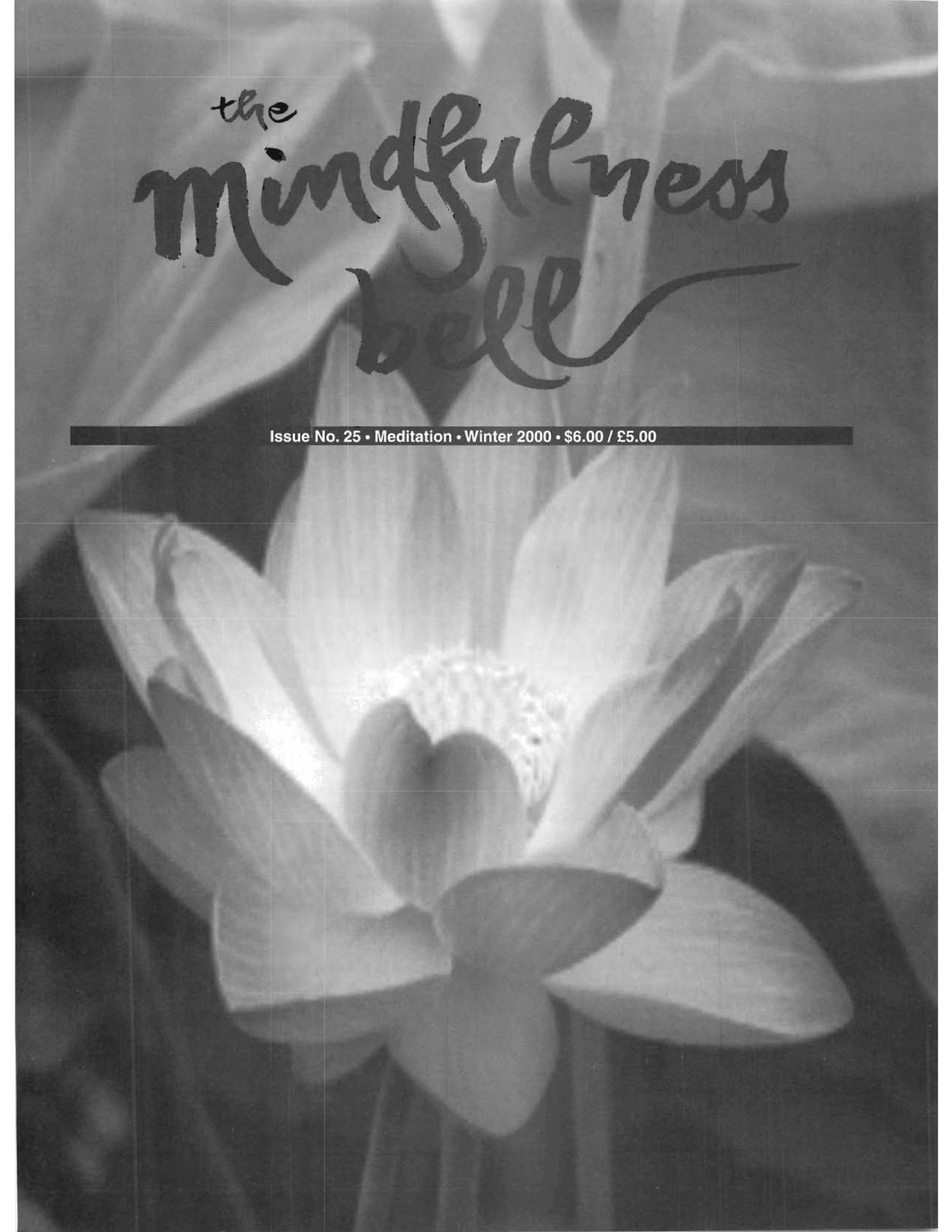By Caleb Cushing
Our Sangha has often thought about participating in a special project that would reflect our care and understanding. I’d silently wondered who would come forth first and commit. To my surprise, it was the Sangha as a whole.
As we practiced together, our stability, joy, and gratitude grew, and so did our numbers. As a regular host, I expressed concern that my sitting room couldn’t accommodate more than the 25 who came regularly.
By Caleb Cushing
Our Sangha has often thought about participating in a special project that would reflect our care and understanding. I'd silently wondered who would come forth first and commit. To my surprise, it was the Sangha as a whole.
As we practiced together, our stability, joy, and gratitude grew, and so did our numbers. As a regular host, I expressed concern that my sitting room couldn't accommodate more than the 25 who came regularly. Looking with Sangha eyes, we recognized that we enjoy newcomers and we were all newcomers once. We remembered how we struggled to practice alone, and how the open door brought us together. We discussed dividing, relocating, and adding sessions, but settled on a moratorium on newcomers. However, we also determined to help new practitioners connect to existing Sanghas and build new ones. And so, our project sprouted.
Twenty-two of us attended Thich Nhat Hanh's Santa Barbara retreat. With Jack Lawlor, we organized a Sangha-building meeting, at the end of which people exchanged names and addresses and scheduled first meetings of home Sanghas. We also distributed Sangha listings, some Sangha profiles from The Mindfulness Bell, and an excerpt from Jack Lawlor's Sangha Building book.
A short time later, Thay led a Day of Mindfulness in Oakland. We printed more of the materials, and designed a sign-up program for people interested in local Sanghas. At long tables organized by cities and regions, we offered sign-up sheets with the heading "I am interested in joining or starting a local meditation group in the tradition of Thich Nhat Hanh." Each sheet had spaces for contact information, and a column to indicate if people could host a group. We also provided lots of pencils. A few days later, we used the same techniques at Thay's lecture in Berkeley. Between the two events, 678 people signed up. One out of eight volunteered to host a Sangha.
People signing up tended to be either relieved and joyful, or quiet and thoughtful. At the end of the Oakland event, two older women came by, clutching handbags and dressed in hand-knit white cardigans. They asked if there were any practice groups in Stockton, an old farm town in the heart of California's central valley. I directed them to the "other areas" sign-up, and they read the top page, noting one Stockton registrant. They turned the page, reading silently until one crowed, "Look! Melody's on the list, too!" They both signed up, joyfully. As they walked off, arm in arm, I heard one say, "I can't wait to get home and call Melody!"
Our Sangha is processing the names and helping organize new Sanghas. We called the 436 people from our area, let them know what Sanghas exist, and that new hosts will call later. We've invited the new hosts to practice periods where we sit, walk, offer guided meditations, and share our experiences. We encourage co-hosting, and provide each host with a list of people in their area and suggestions about scheduling the first gathering. We also expect to visit the new Sanghas in small groups.
We're providing other tangible support: lists of local Sanghas, courtesy of the Bay Area Mindfulness Community; a roster of local Tiep Hien members; some of Thay's books; reprinted Plum Village Chanting Books; and an invitation to register with the Bay Area Mindfulness Community so as to be visible to others and receive information about upcoming events. We notified all northern California Order members and Sanghas in Thay's tradition to expect inquiries. For Sanghas beyond our area, we gave lists of their locals who signed up, and confirmed that the Sanghas were interested and available to welcome the newcomers or to help them connect with other Sanghas.
The Dharma is attractive to lay people, because it can be realized in a deeply personal way. The Buddha reminds us in the Kalama Sutta:
It is fine to have doubt. Do not believe in something just because people think highly of it, or because it has come from tradition, or because it is found in scriptures. Consider whether it goes against your judgment, whether it could cause harm, whether it is condemned by wise people, and above all, whether put into practice it would bring about destruction and pain. Anything that you judge to be beautiful, accords with your judgment, is appreciated by wise people, and once put into practice will bring about joy and happiness, can be accepted and put into practice.
Lay Sanghas model this teaching well. Organized to be responsive, accessible, and pragmatic, they are grass-roots, organic, and fulfilling. "We make the way by walking." Or as my Dharma brother Glen observes, "We're laying the track as we go, and the train's right behind us."
Caleb Cushing, True Original Commitment, is an architect and practices with the Pot Luck Sangha in Oakland, California.

